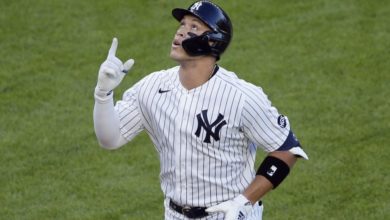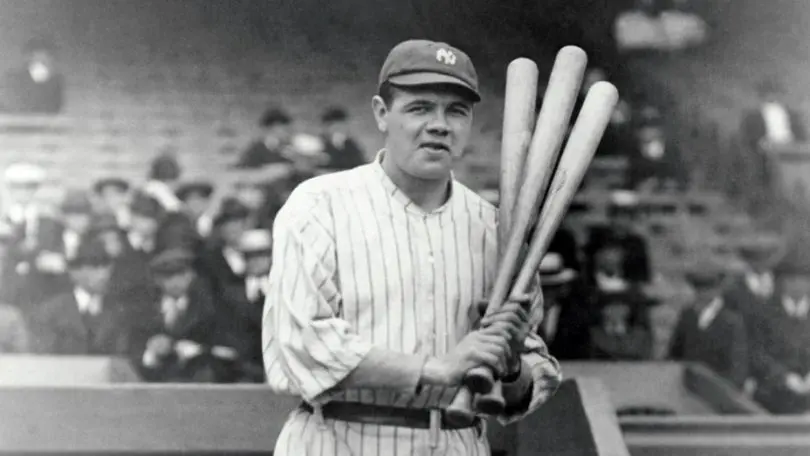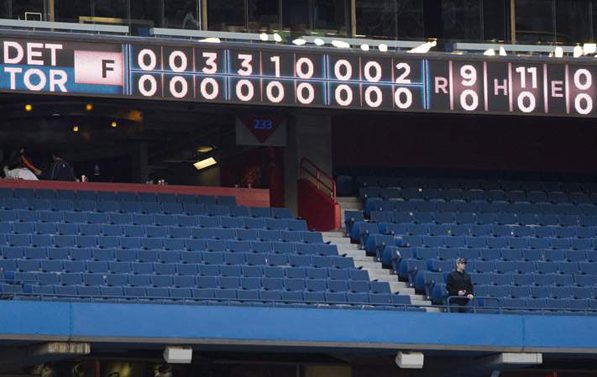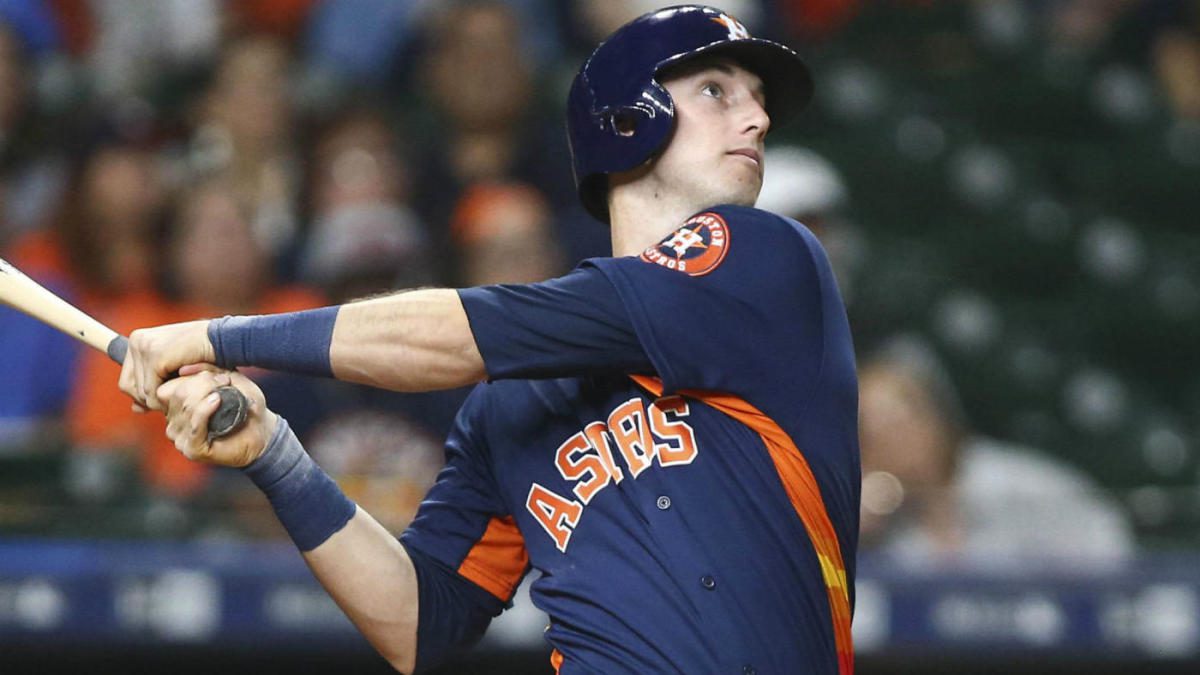
Editor’s Note: Fantasy Baseball Focus is a breakdown of each league, position by position. Each team receives a fantasy analysis on the starter, backup and future prospect if there is one. In case you’re wondering, is there a schedule? Why, yes! Thanks for asking. On the right hand side of the page (your other right), look for the Fantasy Baseball Focus headline. Jamie Shoemaker will analyze the National League, while Dan Kirby handles the American League. Good luck in your fantasy leagues!

The landscape at first base in the American League changed dramatically over the offseason. With Albert Pujols, Prince Fielder and Carlos Pena joining the junior circuit, the position is stockpiled with some of the best fantasy players. If you are in an AL-only league and you don’t have an All Star first baseman, you need to start thinking about other hobbies. Here is my breakdown of the position, along with this handy guide to help you at the draft.
For-sure pick – It means you’ll get consistency, nothing less, nothing more.
Sleeper – Underrated in drafts; can get in later rounds but might produce above-average stats.
Overrated – Might not produce at the hype he’s supposed to produce at.
Long-term value – Might not be the best bet for this year but excellent for keeper leagues.
Top five American League first basemen
1. Albert Pujols, Angels — 2011 stats: 105 R, 37 HR, 99 RBI, .299/.366/.541
2. Miguel Cabrera, Tigers — 2011 stats: 111 R, 30 HR, 105 RBI, .344/.448/.586
3. Prince Fielder, Tigers — 2011 stats: 95 R, 38 HR, 120 RBI, .299/.415/.566
4. Adrian Gonzalez, Red Sox — 2011 stats: 108 R, 27 HR, 117 RBI, .338/.410/.548
5. Mark Teixeira, Yankees — 2011 stats: 90 R, 39 HR, 111 RBI, .248/.341/.494
Baltimore Orioles — Mark Reynolds, Chris Davis, Joe Mahoney
Starter: Reynolds will supply big-time power as he has averaged 37.7 home runs and 91 RBI over the last three seasons. However, he has also hit just .228 over that same span with an incredible 630 strikeouts. If you are in a league that counts strikeouts and OBP, you might want to look for better options. In a standard 5×5 roto or head-to-head league, he is a solid pick as he can also swipe around 10 bases a year. Just make sure you have some high-average hitters to balance him out.
Backup: Davis is a good option as a backup in deeper leagues as he can provide some nice power if given playing time. The 6’-3”, 225 lb lefty has averaged a home run every 22.8 at bats over his career but also strikes out every 2.9 at bats. Like Reynolds, he is an all-or-nothing hitter who won’t pay any dividends unless Reynolds get injured, or your league is very deep.
Prospect: Mahoney, a 24-year-old, 6’-6” and 240 lb lefty, opened eyes at the Arizona Fall League hitting .325 with four home runs and 22 RBI over 20 games. Over 88 games split between single- and double-A, he hit .294 with 11 home runs and 68 RBI in 2011. He plays very good defense and is a high-average hitter whose power is just starting to come around. He may not be a big contributor this season but could get a September call-up, if not earlier.
Boston Red Sox — Adrian Gonzalez, David Ortiz, Lars Anderson,
Starter: Over the last five seasons, Gonzalez has averaged 33 home runs, 107 RBI, with a .295 batting average and .908 OPS. He has also only missed five games during that span, showing the durability fantasy owners love. He enjoyed a career year in his first season perched in the middle of a potent Boston offense, hitting .338 with 27 home runs, 117 RBI and a .957 OPS while scoring 108 runs. A three-time Gold Glove winner, he is assured to avoid the DH-only tag for quite some time. Go ahead and grab him in the first couple of rounds without hesitation as he is one of the most consistent players in the game. A for-sure pick.
Backup: Ortiz only played two games at first last season, so depending on your leagues rules, he may not qualify. If he does, the 36-year-old still has a lot left in the tank. He had a bounce back year of sorts in 2011, hitting .309 with 29 home runs, 96 RBI and a .953 OPS. It was his highest batting average since 2007, so expect a more reasonable .275-.280 mark in 2012, but the power numbers should remain at 25-30 home runs and 85-95 RBI. A relatively safe pick, just don’t reach too high on him.
Prospect: Over 48 plate appearances with the red Sox over the last two seasons, Anderson has yet to get an extra base hit or an RBI. At 6’-4” and 220 lbs, he has the frame built for power but has only averaged a home run every 40.6 at bats in the minors. He does have a very good batting eye as evidenced by his .372 career OBP, almost 100 points better than his .276 batting average. Unless Gonzo goes down with a serious injury, Anderson won’t provide much value this season.
Chicago White Sox — Paul Konerko, Adam Dunn, Dayan Viciedo
Starter: Konerko continues to be one of, if not the most underappreciated players in baseball, especially fantasy baseball. He posted his second straight 30-100-.300 season in 2011, and over the last 13 seasons, has averaged 29.4 homeruns, 92.5 RBI and a .286 batting average. He won’t steal a base but will give you 30 HR/100 RBI with a good average even on a bad White Sox team. A for-sure pick in my eyes, and one you can get in the middle rounds as people continue to sleep on him.
Backup: Dunn is going to be an interesting pick come draft time. After one of the most forgettable seasons by any player in recent memory (Andruw Jones comes to mind, as well), many have already written him off and will stay away at all costs at their drafts. Over 122 games, he hit .159 with 11 home runs, 42 RBI and a .569 OPS. Keep in mind, however, Dunn is still just 31 years old and his paltry numbers weren’t a result of injuries. It was all mental, and with an offseason to clear the cobwebs, Dunn could be primed for a comeback year. After all, this is a guy who averaged 40.3 home runs, 101 RBI and a .910 OPS from 2004-2010. A sleeper pick for 2012.
Prospect: Viciedo is a tank at 5’-11” and 230 lbs. He hit .296 with 20 home runs, 78 RBI and a .856 OPD over 505 plate appearances for triple-A Charlotte in 2011. He also shows a good approach at the plate with 85 K/45 BB over that span. Still just 22 years old, the power potential is great, and he could see some significant time at DH this season if Dunn’s woes continue. Not going to steal bases, but should hit for a good average with enough power for a deeper league roster spot.
Cleveland Indians — Matt LaPorta, Travis Hafner, Shelley Duncan
Starter: LaPorta has yet to fulfill the potential that made him the seventh overall pick in the 2007 draft by the Brewers. He has mashed the ball at the minor-league level, posting a .298 average, .956 OPS and a home run every 18.4 at bats over 1,046 plate appearances, but has struggled with big-league pitching. Over 1,008 major-league plate appearances, he has a .238 batting average, .701 OPS and has hit a home run every 33.6 at bats. At age 27, the clock is ticking on his opportunities, but the Indians appear to be giving him a long leash as they don’t have many other options at first base. Not a guy you want as your starting first baseman, but a good option as a backup as he will most likely be good for around 20 home runs, 70 RBI and an average that won’t crush your team with a full season’s workload.
Backup: Hafner hasn’t played a game at first base since 2007 but could get some opportunities this season if LaPorta stinks it up. Injuries have taken their toll on the once-feared hitter as he has missed 285 games over the last four years. Still, he hit .280 with 13 home runs, 57 RBI and a .811 OPS over 94 games last season. He is worth a late round flier if you need some power and is a guy who won’t hurt your average. Duncan is a good pickup in deeper leagues as he will qualify at both first base and the outfield depending on your league’s rules. He hit .260 with 11 home runs and 47 RBI over 247 plate appearances in 2011. He could also get extended time at first which would make him more appealing as he has the power to hit 20-25 home runs with a decent average given significant playing time.
Detroit Tigers — Prince Fielder, Miguel Cabrera
Starter/backup: Fielder will be the starting first baseman this season for the Tigers with Cabrera moving over to third. However, Miggy will be eligible at first since he played all of last season there, and with Fielder most likely hitting behind him for protection, could have a career year, as Ryan Braun did in 2011 en route to winning the MVP award. Cabrera lead the league with a .344 average in 2011 while hitting 30 home runs, 105 RBI and a 1.033 OPS. His 162-game career averages are .317, 33 HR, 118 RBI and a .950 OPS, and he’s still only 28 years old and the best right-handed hitter not named Pujols in baseball. As a for-sure pick as there is.
Fielder is coming off a .299, 30 HR, 120 RBI and .981 OPS season, and the league change shouldn’t effect him one bit. Hitting in the middle of a potent Tigers lineup, he should produce similar numbers as last year as Comerica Park and Miller Park are nearly identical when it comes to park-factor numbers. Having only missed one game over the last three seasons, Fielder also gives owners zero durability concerns. Like Cabrera, Fielder is a first-round pick, and without a doubt, a for-sure pick.

Kansas City Royals — Eric Hosmer, Billy Butler
Starter: If you are starting a keeper league this year, Hosmer is a guy you should be drooling over. The third-overall pick in the 2008 draft, the 22-year-old had an outstanding rookie campaign. The 6’-4”, 230 lb lefty hit .293 with 19 home runs, 78 RBI, an .800 OPS and also stole 11 bases, leading all first basemen in that category. He got better as the season went on, hitting .313 with 11 home runs, 44 RBI and nine stolen bases in 70 games after the All-Star break. Hosmer doesn’t strike out a lot, and while the stolen base numbers may be an anomaly, the power and high-average potential is scary good. As with a lot of young players, a sophomore slump could be in the works, but Hosmer has a ton of long-term potential and will be taken very early by many people banking on a big year hitting in a suddenly potent Royals’ offense.
Backup: Butler is the primary DH for the Royals but did play 11 games at first last season. He is a high-average hitter who could contend for a batting title in any given season, and he supplies enough power to make him an early-round pick in most drafts. He hit .291 with 19 home runs, 95 RBI and an .822 OPS in 2011 after hitting .318 in 2010. He is durable, as well, missing only 10 games over the last three seasons, so he comes with little risk overall. At just 25 years old, Butler has yet to hit his peak, and for that reason, he has long-term potential, especially given the lineup around him.
Los Angeles Angels — Albert Pujols, Mark Trumbo, Kendrys Morales
Starter: If you’re in an AL-keeper league, and you have the first pick this year, you’re probably still dizzy with excitement, and your Pujols jersey has most likely arrived in the mail already to rub it in everyone’s faces at the draft. After all, you are getting arguably the best overall right-handed hitter since Jimmie Foxx. Pujols had a down year in 2011, hitting .299 with 37 home runs, 99 RBI and a .906 OPS. It was the first time in his 11-year career that the three-time MVP failed to hit .300 and drive in 100 runs. Still, at 32 years old, and with 162-game averages of .328, 42 HR, 126 RBI and a 1.037 OPS, he remains the best player in baseball and should be one of the top three players selected in any format. With AL pitchers having to try and figure Pujols out, something NL pitchers never did, expect him to have a season similar to his 162-game averages. The most for-sure pick out there.
Backup: Trumbo was a contender for AL Rookie of the Year in 2011 after hitting .254 with 29 home runs, 87 RBI and a .768 OPS. His playing time took a significant hit with the signing of Pujols as he, Bobby Abreu and Kendrys Morales will all be sharing time at DH this season. Trumbo should get the bulk of the playing time as Abreu seems to be nearing the end of his career, and Morales is coming off a major injury that caused him to miss the entire 2011 season, as well as most of the 2010 season. However, don’t draft him expecting anything near last season’s totals, expect something more like 20 home runs and 60 RBI, making him a better option for deeper leagues. As far as Morales, no one knows what to expect from him this season. He had a breakout 2009, hitting .306 with 34 home runs, 108 RBI and a .924 OPS, but the injuries are too hard to ignore. Reports are he has looked very impressive during early workouts, but where is he going to play?
Minnesota Twins — Justin Morneau, Chris Parmelee
Starter: Concussions, neck surgery and a bad back have caused Morneau to miss 201 games over the last three seasons. When healthy, he is one of the best run producers in the game, averaging 119 RBI from 2006-2009. Still just 30 years old, he can’t be written off, especially considering he was hitting .345 with 18 HR, 56 RBI and a 1.056 OPS through 81 games in 2010 before the injuries started. He is a high-risk/high-reward pick, but if he is still around in the middle rounds, he is well worth the risk.
Backup/Prospect: Parmelee, the team’s first-round pick (20th overall) in the 2006 draft, was very impressive during his brief stint with the major-league team in 2011. Over 21 games, he hit .355 with six doubles, four home runs and 14 RBI. He also showed great plate discipline by walking 12 times for a .443 OBP. Will get a good amount of playing time as the Twins will be cautious with Morneau and could get full-time duty if Morneau’s injuries continue. Could put up a line of .280, 20 HR and 80 RBI with regular playing time. Not going to steal bases but a good option in deeper leagues, regardless of playing time.
New York Yankees — Mark Teixeira, Nick Swisher, Brandon Laird
Starter: Teixeira put together another monster year in the power categories in 2011 hitting 39 home runs with 111 RBI. It was the eighth consecutive season he has had at least 30 HR and 100 RBI. However, the batting average dipped to a career-low .248, this after hitting .256 in 2010. Still, with 162-game career averages of .281, 103 runs, 37 HR, 120 RBI and a .904 OPS, the 32-year-old is still in the prime of his career. Hitting in the middle of a loaded Yankees lineup should allow him to continue his 30 HR, 100 RBI streak. Even if the batting average stays around .250, he is a for-sure pick based on power numbers alone.
Backup: Swisher will get some time at first base and should qualify in most leagues. He hit .260 with 23 home runs, 85 RBI and an .822 OPS in 2011. He takes a lot of walks, which leads to a lot of runs scored, and has good value in all formats because of that. With regular playing time, he should hit around .260 with 25 home runs, 85 RBI and 90 runs scored. A solid option if you miss out on the big-name first basemen.
Prospect: Laird is a 6’-1″, 210 lb righty with power. The 23-year-old hit .281 with 25 home runs and 101 RBI split between double-A/triple-A in 2010 but took a step back in 2011, hitting .260 with 16 home runs and 69 RBI over 123 games. Could get playing time if there is an injury, but otherwise an option in very deep leagues only.
Oakland Athletics — Daric Barton, Chris Carter, Kila Ka’aihue, Brandon Allen
Starter/Backup: Honestly, who knows? Barton will get first crack at the position, but he struggled mightily in 2011. Over 67 games, he hit .212 with no home runs, 21 RBI and a .592 OPS. He showed promise in 2010, hitting .273 with 10 home runs, 57 RBI, seven stolen bases and a league-leading 110 walks, but it’s hard to ignore last year’s numbers. Carter is a 6’-4”, 245 lb, power-hitting righty who might have the most upside of the group. However, he has yet to show the ability to hit major-league pitching. The 25-year-old has hit .167 over 124 plate appearances with three home runs, seven RBI and a .480 OPS over his career. Allen and Ka’aihue don’t offer much value unless you are in a very deep league, and even then …
Seattle Mariners — Justin Smoak, Mike Carp
Starter: Smoak continues to show flashes of the player the Rangers thought he could be when they drafted him with the 11th-overall pick in the 2008 draft. The 6’-4”, 230 lb lefty has enormous power but still hasn’t been able to put it all together. At 25, he still has time, however. Over 123 games with the Mariners in 2011, he hit .234 with 15 home runs, 55 RBI and a .719 OPS. He had 12 HR and 42 RBI at the break, then fizzled out to end the season. A broken nose on August 12 caused him to miss time, as well. Not a good starting option in any format until he shows he can handle big-league pitching consistently.
Backup: After hitting .343 with 21 home runs, 64 RBI and a 1.060 OPS over 66 games in the PCL, the Mariners brought up Carp, a 6’-2″, 210 lb lefty to replace the injured Smoak. Over the final 64 games, he hit .286 with 12 home runs, 46 RBI and a .819 OPS. He also played 27 of those games in the outfield so he has dual eligibility. Considering he outplayed Smoak in less games last season, and with the dual eligibility, he seems like the better option in deeper leagues.
Tampa Bay Rays — Carlos Pena, Luke Scott
Starter: Pena returns to the Rays after one year with the Cubs in which he hit .225 with 28 home runs, 80 RBI and an .819 OPS. You can expect 30 home runs and 90 RBI from him in 2012, but the batting average will always be a detriment to your team. However, Pena has averaged 94.8 walks over the last five seasons, so if your league counts walks, he is among the best in baseball. He is a for-sure pick based on his consistent power and walk totals.
Backup: If Scott gets playing time, he is a solid option in deeper leagues as he can put up power numbers in bunches. From 2008-10, he averaged 25 HR, 71 RBI and an .846 OPS as a starter. He struggled last season, hitting just .220 with 9 HR, 22 RBI and a .703 OPS over 66 games. At 33 years old, his best days are behind him. If he gets starting time, however, he will produce.
Texas Rangers — Mitch Moreland, Michael Young
Starter: Over 134 games in 2011, Moreland hit .259 with 16 home runs, 51 RBI and a .733 OPS. The 26-year-old, 6’-2”, 230 lb lefty has the potential to be an offensive force but is still figuring things out. Over 316 minor-league games, he hit .313 with 48 home runs, 264 RBI and showed great discipline taking 159 walks to only 223 strikeouts. He does hit in a great park for hitters, and with arguably the best lineup in baseball, he is still a solid option if you forget to take a first baseman until the later rounds.
Backup: Young qualifies at a bunch of positions, first base being one of them. Moreland may be the starter for the Rangers but Young is the far better option. He hit a career high .338 in 2011 with 11 home runs, 106 RBI, six stolen bases and 88 runs. He also lead the league in hits with 213 and rarely misses a game. He is always a safe bet for around 15 home runs, 85 RBI and a .300 average with a ton of hits and runs. A for-sure pick.
Toronto Blue Jays — Adam Lind, Edwin Encarnacion, David Cooper
Starter: Lind was on pace to duplicate his breakout 2009 season in which he hit .305 with 35 home runs, 114 RBI and a .932 OPS. Through the first 67 games of 2011, he was hitting .300 with 16 home runs, 52 RBI and an .865 OPS. Then he suffered a lower-back injury and hit .197 with 10 home runs, 35 RBI and a .589 OPS over the final 58 games. Back injuries are not friendly to power hitters, so I would advise to look for other options. When healthy, Lind is a solid option for power and a big-time run producer, but he is just too risky for 2012 in my opinion. I am placing an overrated tag on Lind because people will draft him on his overall numbers without realizing the potential disastrous season that lies ahead.
Backup: Encarnacion is a solid option in deeper leagues, especially if Lind’s injury continues. He is a cheap source of home runs and won’t kill your batting average.
Prospect: Cooper was the team’s first round draft pick in 2008 and was thrust into some action when Lind got hurt. Over 27 games, he hit .211 with two home runs, 12 RBI and a .678 OPS. He has power and has also shown the ability to be a major run producer, but don’t expect much value from him in 2012 as he is still adjusting to big-league pitching.





